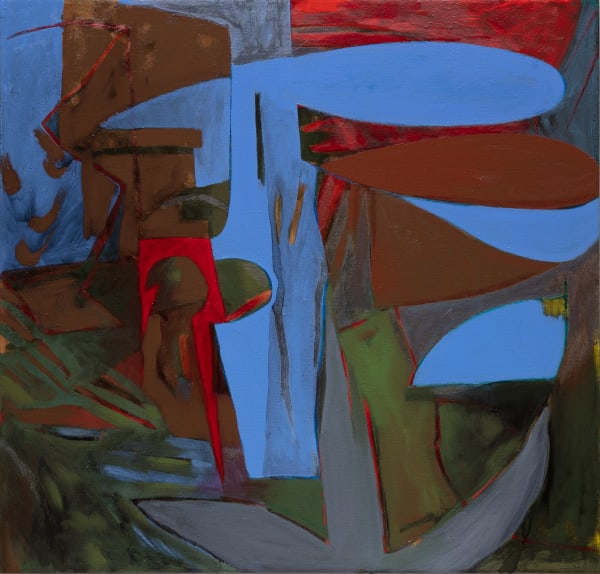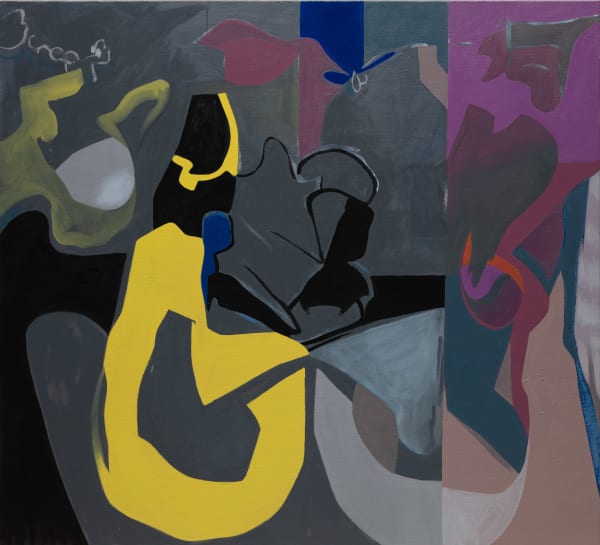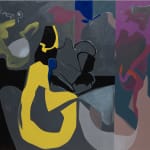Leopold Plotek - What Does the Song Hope For?
-
 Leopold Plotek, Beer and Ocean, 2021
Leopold Plotek, Beer and Ocean, 2021 -
 Leopold Plotek, The Picabia Collage, 2019
Leopold Plotek, The Picabia Collage, 2019 -
 Leopold Plotek, Tashkent, 2016
Leopold Plotek, Tashkent, 2016 -
 Leopold Plotek, The Green Theatre, 2009
Leopold Plotek, The Green Theatre, 2009 -
 Leopold Plotek, X-Ray of the Angel, 2010
Leopold Plotek, X-Ray of the Angel, 2010 -
 Leopold Plotek, Max Beckmann in California (Strange Fire), 2013
Leopold Plotek, Max Beckmann in California (Strange Fire), 2013 -
 Leopold Plotek, St. George's, Bloomsbury, 2018
Leopold Plotek, St. George's, Bloomsbury, 2018 -
 Leopold Plotek, Content, pas content, content, 2019
Leopold Plotek, Content, pas content, content, 2019 -
 Leopold Plotek, Hue and Cry, 1989-2011
Leopold Plotek, Hue and Cry, 1989-2011 -
 Leopold Plotek, Der Dunkel, 2017-20
Leopold Plotek, Der Dunkel, 2017-20
What does the song hope for? And the moved hands
A little way from the birds, the shy, the delightful?
To be bewildered and happy,
Or most of all the knowledge of life?
But the beautiful are content with the sharp notes of the air;
The Warmth is enough. O if winter really
Oppose, if the weak snowflake
What will the wish, what will the dance do?
— “Orpheus,” W.H. Auden
Corkin Gallery is pleased to present What does the song hope for?, an exhibition of work by Québec painter Leopold Plotek. Anchored by large-scale works produced over the last decade, the exhibition surveys the evolution of the artist’s distinct approach to painting, which mobilizes reflection, improvisation, and, above all, hope.
The show takes its title from the first line of the W.H. Auden poem Orpheus. The question — “What does the song hope for?” — prompts viewers to meditate on the trajectory of artistic creation and the possibility for art to forge optimism and affirmation, especially during challenging times. Within his own practice, Plotek often finds solace in revisiting artists, poets, and philosophers of the past as he projects a new path forward with each painting.
The works in this exhibition reframe the Western canon as an object of personal experience and reflect the artist’s own engagement with architecture, artifacts, and art historical precedents. His interest in these particular subjects and sources, which range from Romanesque monuments and motifs to works by Modernist masters like Beckmann, Picabia, and Mondrian, extends beyond narrative and formal properties to encompass the conditions and spirit in which they were produced. Plotek relies on intuition and imagination to continually rework his paintings; he repeatedly scrapes the canvas to adjust colour, light, and line, all in pursuit of salvaging an irretrievable memory. By giving way to the desire to connect with an irreconcilable past and the impossibility of truly aligning experience with memory, Plotek is in fact immersing himself in the never-ending yet ever-hopeful process of translating feeling into form.
Born in 1948 in Moscow, USSR, Leopold Plotek emigrated to Canada from Warsaw, Poland in 1960. The artist attended McGill University and Sir George Williams University (Montreal, Québec), where he studied under Plasticien artists Yves Gaucher and Roy Kiyooka; he also studied under William Townsend at the Slade School of Fine Art (London, United Kingdom). After spending the early years of his career grappling with his place in the “stream of Modernism,” he broke with the traditions of his esteemed mentors to evolve a method of painting inspired by “forms that offer themselves to be encountered and responded to with one’s imagination.”
The subject of almost 30 solo shows in Toronto and Montréal since 1976, Plotek has established himself as a leading Québec painter. Many prominent institutions have hosted group exhibitions featuring his work, including the National Gallery of Canada, Ottawa (Inaugural Exhibition, 1988), the Musée des Beaux-Arts de Montréal (1982), and the Musée d’art contemporain de Montréal (1982, 1995, 2001, 2017), and his paintings are part of institutional, corporate, and private collections across Canada and internationally.














